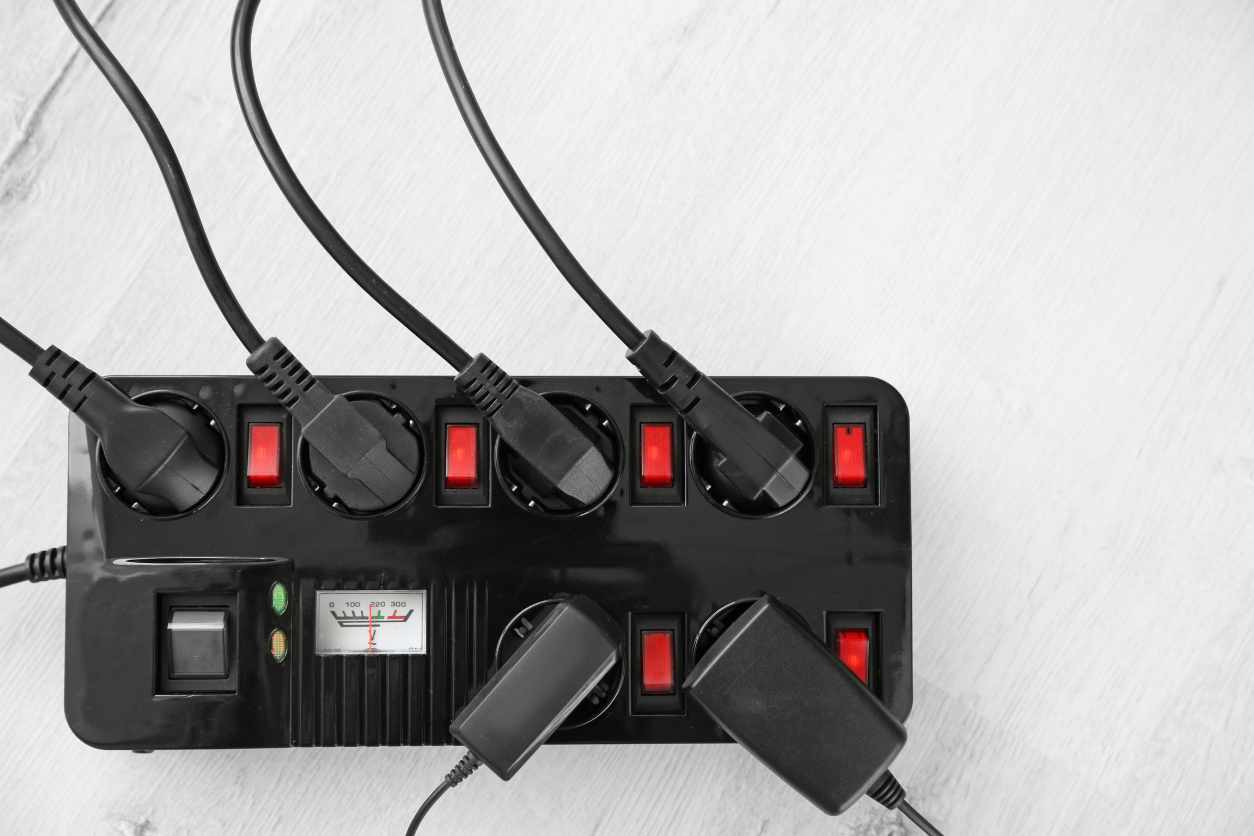Power Strip Dos and Don’ts: Can You Plug an Extension Cord Into a Power Strip?

Power strips are essential for managing multiple electronic devices and appliances, especially in today’s tech-savvy world. However, using them safely is crucial to prevent electrical hazards and fires. One common question is whether it’s safe to plug an extension cord into a power strip. In this guide, we’ll explore power strip dos and don’ts, including the safety considerations of using extension cords and USB power strips.
What Are Power Strips?
A power strip, a surge protector, or an extension block provides multiple electrical outlets from a single source. These devices come in various forms, from basic models with a few outlets to advanced surge protectors with additional features like USB charging ports. Here are some things to keep in mind when using a power strip:
Power Strip Dos
- Use surge protectors: Invest in surge-protected power strips. Surge protectors safeguard your devices from voltage spikes and surges, which can cause damage or data loss.
- Check the rating: Ensure the power strip has a sufficient electrical rating to handle the devices you intend to plug in. Overloading a power strip can lead to overheating and fire hazards.
- Inspect for damage: Regularly inspect your power strips for signs of wear and tear. You should replace damaged or frayed cords immediately.
- Follow the manufacturer’s instructions: Read and follow the manufacturer’s guidelines for proper usage, including load capacity and recommended outlets for specific devices.
- Unplug when not in use: To reduce the risk of electrical fires and save energy, unplug devices from the power strip when not in use.
- Organize cords neatly: Keep cords organized and untangled to prevent tripping hazards and damage.
Power Strip Dont’s
- Don’t overload: Never exceed the maximum load capacity of a power strip. Overloading can cause overheating, leading to electrical fires or device damage.
- Don’t daisy chain: Avoid daisy chaining or connecting multiple power strips. This practice increases the risk of overloading and overheating.
- Don’t cover or overheat: Never cover a power strip with fabrics or place it in areas where it can overheat, such as under carpets or rugs. Adequate ventilation is essential to prevent overheating.
- Don’t use outdoors: Most power strips are not designed for outdoor use. Using them outside exposes them to moisture and can lead to electrical hazards.
- Don’t ignore sparks or smells: If you notice sparks, unusual sounds, or a burning smell coming from a power strip, immediately unplug it and replace it. These are signs of a malfunction or potential fire hazard.
What Are USB Power Strips?
USB power strips have become increasingly popular, offering standard electrical outlets and USB charging ports. These can be convenient for charging smartphones, tablets, and other USB-powered devices. When using a USB power strip, consider the following dos and don’ts:
USB Power Strip Dos
- Check USB port amp ratings: USB ports on power strips typically have amp ratings. Ensure the USB ports provide the necessary power for your devices without overloading them.
- Use for low-power devices: USB power strips are ideal for charging low-power devices like smartphones, headphones, and tablets. Avoid using them for high-power devices like laptops or power-hungry gadgets.
USB Power Strip Don’ts
- Don’t overload USB ports: Avoid connecting too many devices to the USB ports simultaneously. Overloading can lead to slower charging speeds or damage to the ports.
- Don’t mix voltage requirements: Some devices require specific voltage levels for safe charging. To prevent damage, avoid mixing devices with different voltage requirements on the same USB power strip.
Can You Plug an Extension Cord Into a Power Strip?
Let’s address the common question: can you plug an extension cord into a power strip? The short answer is yes, but with caution and within specific guidelines.
Dos
- Use a heavy-duty extension cord: If you need to extend the reach of your power strip, opt for a heavy-duty extension cord. Ensure it has an appropriate gauge (lower gauge numbers indicate thicker wires) to handle the electrical load without overheating.
- Inspect both the power strip and extension cord: Before connecting them, thoroughly inspect both the power strip and the extension cord for damage or wear. Replace any frayed wires or damaged insulation immediately.
- Avoid daisy chaining: While you can plug an extension cord into a power strip, avoid daisy chaining multiple power strips and extension cords together. Doing so can lead to overloading and pose a fire risk.
Don’ts
- Don’t exceed load capacity: Be cautious about staying within the load capacity of the power strip and the extension cord combined. Overloading the setup can lead to overheating and safety hazards.
- Don’t use thin or damaged cords: Never use thin or damaged extension cords. Thin cords may not handle the electrical load safely, and damaged cords can pose a serious risk.
- Don’t place cords under carpets: Avoid running extension cords, especially those connected to power strips, under carpets or rugs. This can trap heat and increase the risk of overheating.
Summing Up
Power strips are versatile tools for managing multiple electronic devices, but you must use them safely to prevent electrical hazards. Follow the dos and don’ts outlined in this guide to ensure safe and efficient use of power strips, and when necessary, use heavy-duty extension cords to extend their reach while adhering to load capacity guidelines. With the right precautions, you can safely and conveniently power your devices while minimizing the risk of electrical issues.
Your Trust, Our Core Commitment
At Rising Tech, earning and maintaining your trust is the cornerstone of our mission. We're dedicated to transparency, impartiality, and the relentless pursuit of truth in every article, review, and recommendation we publish. Our commitment to these principles ensures that you, our valued reader, are always equipped with reliable and unbiased information. Let us be your trusted guide in the ever-evolving world of technology.